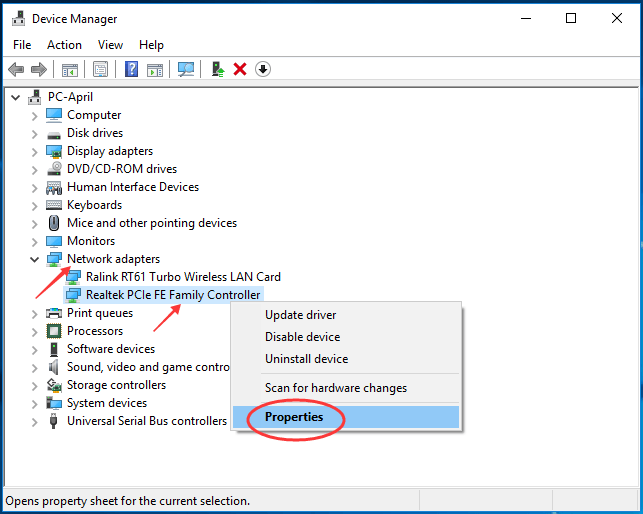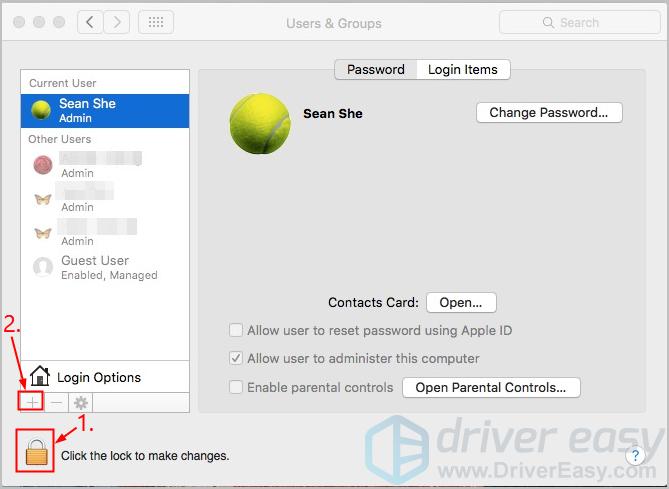Solved: Need Driver For Mac

Advertisement Plugging in a USB hard drive and finding out you cannot write to it is frustrating, but External hard drive not showing up on your Mac? Here's a troubleshooting guide to help get your external hard drive or flash drive working again. In the newer versions of macOS, you do not even get an error message. Even though the Mac has had a resurgence, Apple users still end up being second-class citizens to peripherals makers (just ask anyone who likes mechanical keyboards). So if you are stuck with one of these drives the following steps can get you working.
Solved Need Driver For Macbook Air
Why Is This an Issue? NTFS is the proprietary file system that Microsoft started using back in the NT days. They released it to consumers in the Windows 2000 days.
Need driver I have a mac pg4 power book, with OS 10.4. Ineed the driver for my Sony UP-D50 Printer can u help me. You would need a external case designed to hold the SSD and connected to a Mac system using one of these: OWC Envoy USB 2.0-3.0 Enclosure for 2010 & 2011 MacBook Air OWC Envoy USB 2.0-3.0 Enclosure for 2012 MacBook Air.
Most of this was when The success of Apple indeed lies with their attitude of 'Thinking Differently'. While the company may not have always been heralded as a success, their strength over the years has come from great vision. Apple had moved from HFS to HFS+ during this time, but Core Storage and APFS were not a glimmer in Cupertino’s eye yet.
Apple has full support for the various permutations of You may not know it, but choosing the right filesystem for your drives is actually pretty important. Although the main idea of all filesystems is the same, there are many advantages and disadvantages over each. Yet, by default it has never supported writing NTFS, so you can only bring your files one way. There are a number of ways to fix this, from reformatting the drive to installing software that allows you to write to NTFS volumes, to riskier more experimental solutions. If Your Drive Is Blank If your drive is blank, you are in luck.
Simply format it and move on. How you format it is going to depend on what want to do with the drive. Once you plug in the drive, open Disk Utility. Highlight your drive in the sidebar and click Erase. Then your next step depends on what you want to do with the drive. You need to format it to one of the following ways. Time Machine Backup – If you are going to use the drive to It's really easy to set up Time Machine, the backup software that comes with every Mac — but how do you get your files back when things go wrong?, you want to format the drive to HFS+.
In the Disk Utility GIU this shows up as Mac OS Extended. ( Overwhelmed by WWDC? You don't need to be.
Here are all the important announcements from Apple's 2017 keynote., APFS may be an option for this as well.). Portable Drive – If you are looking to make a portable drive to Do you really know what your hard drive does whenever you read a file from it or write one to it? Our hard drives can now store massive amounts of data, and that massive space., choose exFAT. If you are only working with Macs, you can format your drive to. Working With Older Devices – This is probably rare, but if you are using the disk with another device that does not have support for exFAT, then you may have to choose the older FAT option. In most cases, you should not use this as it limits drive sizes to less than 32 GB. If You Need a One-Time Fix Warning: The following describes a method of enabling macOS built in experimental NTFS support. There is a very real chance that something could go wrong, resulting in the loss of data on the target drive.
We recommend you do not rely on this method for writing to important volumes or as a long-term solution. You have been warned! Sometimes you may just need to write some files to a drive once. In that case, you may not want to install anything at all.
The Mac has built-in support to read NTFS by default. Its write capability hides behind a Terminal hack. As we Some of the most common methods of adding NTFS support broke with the recent release of El Capitan, but you can still write to your Windows drives with a bit of tinkering., you need to do this for each NTFS drive you want to write. Open Terminal and Although Linux has become easy enough for practically anyone to use without ever having to use the Terminal, there are some of us who regularly use it or are curious about how one can control. If you do not have a preference, use Nano by typing. Nano etc/fstab Then copy this line into the file: LABEL=DRIVENAME none ntfs rw,auto,nobrowse Replace DRIVENAME with the name of the drive you want to access.
Hit control+o to save the file, and then control+x to quit Nano. Disconnect and reconnect your drive to remount it, and now your drive is available in /Volumes. You can only get here in Finder — click Go in the menu bar and select Go to Folder. Enter /Volumes and click Go. If you are curious about ftsab, it is a hidden file that sets preferences for disks. It can be used to prevent disk partitions from mounting. In in this case, it enables read-write on a disk that isn’t writable on default.
In Linux and Unix, it is more of an. If You Want Free and Open Source and Don’t Mind the Work While you may not be averse to Terminal, no one likes to edit a preference file every time they deal with a new drive. If you are in IT and dealing with Windows drives regularly, you may need a better option. One of the most popular solutions is an Open Source product, FUSE for MacOS.
This program is a handler; it does not contain anything to mount and read the files themselves. So, but you still need to install some additional software. There is a Homebrew package you can install to mount NTFS drives called NTFS-3g. The first Install (almost) any free Mac app by typing four words and hitting 'Enter'.
That is a simple one liner in the Terminal: /usr/bin/ruby -e '$(curl -fsSL Once you run the commands to install Homebrew, and you get the confirmation in Terminal, you need to install the NTFS-3G package. That is another single command. Brew install ntfs-3g If Terminal does not recognize that you have already installed the FUSE package, you may need to run this command as well: brew cask install osxfuse That install requires you to reboot your Mac. Then try re-running the ntfs-3g command.
This enables your Mac to write to NTFS drives, but it is not automatic. You need to run the following commands each time that you want to mount a drive read/write: sudo mkdir /Volumes/NTFS sudo /usr/local/bin/ntfs-3g /dev/disk1s1 /Volumes/NTFS -olocal -oallowother Replace disk1s1 with the actual drive address; you can find this with the command: diskutil list If you do not want to run these commands each time, there is a fix. You can boot your Mac into single-user mode, and replace the built-in Mac NTFS tools with NTFS-3G.
There are some warnings about security on the project site, but check it out if you want the steps to enable it here. They make it clear that this opens up your Mac to potential exploitation, so this step is not for the faint of heart. Alternatively, Choose a Paid Option Some people are not comfortable with the Terminal, and others are. The Mac App Store has an App that hasn’t updated for years.
Solved: Need Driver For Mac Os
It is also only available in German, so unless you Deutsch sprechen, you are out of luck. There are some different choices, but the longtime option is.

It is $19.95 (US) per Mac license, though you get a discount for buying three or five licenses at a time. You can test drive the software with a ten-day trial too. It is a simple install, and then you have a menu bar item that shows your NTFS drives. (The screenshot above is the windowed mode.) Better still, your NTFS drives now show up in Finder normally, and you can treat them like any other drive. Is another program, built on top of the open standard we used above, NTFS-3G. The licensing is a bit simpler, as you pay $31 (US) to use it on all your Macs.
It is not quite as much of a deal if you are only using one Mac. With a 15-day free trial, you can put the program through its paces before shelling out. Rather than a menubar item, Tuxera installs as a preference pane.

You can format drives from here, but not much else. Like Paragon, you can use the Finder to work with the drive. Cross-Platform Blues Both paid options offer a painless way to work with files. The open source and Terminal options are going to be more work, and experimental support shouldn’t be relied on full-time.
You can also write as much data to and from your drives while trialing both paid options, before parting with your cash. Both allow you to use Finder normally on the Mac, for a transparent solution.
Terminal and open source options are not so easy to work with, but you could turn the mount commands into Whether you want to increase available storage using the cloud or take matters into your own hands, here's how macOS Sierra can help lighten the load. Try out each and find what works best for you. How do you write to NTFS drives on your Mac, or have you ditched Microsoft’s file system entirely? Explore more about:,.
So I am pretty new to when it comes to a Mac, and I just got a iMac(late 2013) upgraded almost fully I guess, it has been fully updated (the OS too) and now I wonder, if it would be used for gaming or anything really, do I need to update any drivers? Graphics Driver? Use CUDA drivers? If so could I get redirected or told what should I update or the drivers itself, for the best possible(performance). OS - Sierra 10.12.5 CPU - 3.5GHz(boost to 3.9GHz) Intel Core i7 RAM - 16GB 1600MHz DDR3 HDD - 1TB 7200RPM GPU - GTX 780M 4GB.